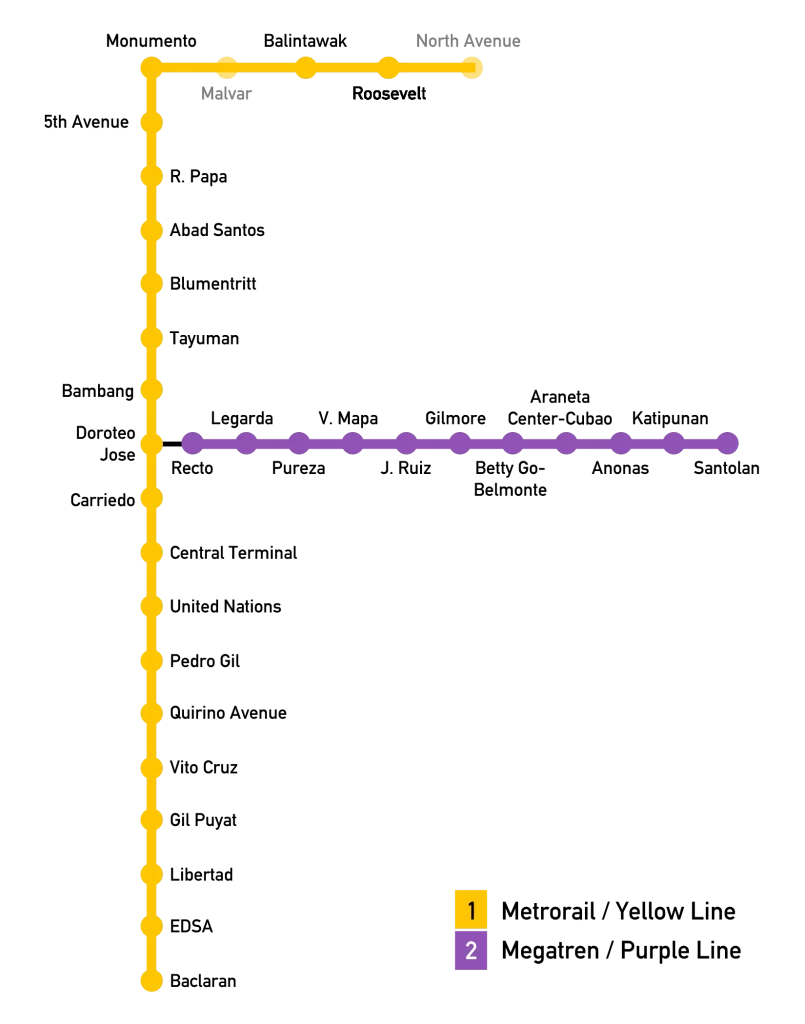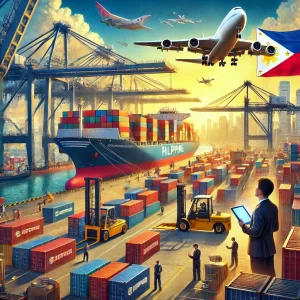The Light Rail Transit Line 1 (LRT-1) in Manila, Philippines, is an important train system that links the south and north parts of Metro Manila. It runs from Baclaran to Roosevelt, helping people easily travel around the city. LRT-1 is crucial for commuters and tourists alike, providing quick access to major places like business areas, cultural sites, and historical spots. Stations such as Baclaran, EDSA, Gil Puyat, and Central Terminal not only make travel convenient but also highlight Manila’s diverse cityscape and rich history.
The history of Manila’s Light Rail Transit Line 1 (LRT-1) traces back to its inception in the early 1980s as a solution to the city’s transportation challenges. The proposal for an elevated rail system aimed to ease traffic congestion and enhance urban mobility, gaining government approval at the time. Construction commenced in 1981, starting with the southern stretch from Baclaran to Central Terminal, strategically linking key commercial and residential zones to improve daily commuting for the city’s residents.
LRT-1 Inauguration and Expansion
The inaugural segment of LRT-1, running from Baclaran to Monumento, commenced operations on December 1, 1984, marking a significant milestone in Manila’s transit history. This initial phase greatly improved connectivity across the city, benefiting commuters with enhanced accessibility. Subsequent expansions over the years responded to rising passenger needs by extending the line northwards towards Monumento and later Roosevelt, further integrating LRT-1 into the northern areas of Metro Manila.
Subscribe to the Ex-works24/7 newsletter
1. Baclaran Station
Our journey begins at Baclaran Station, located in the heart of Baclaran district. This bustling area is famous for the Baclaran Church, a pilgrimage site dedicated to Our Mother of Perpetual Help. The Baclaran Market nearby is a hive of activity, offering everything from fresh produce to religious items, reflecting the area’s vibrant local culture.
2. EDSA Station
Moving northward, we arrive at EDSA Station, named after Epifanio de los Santos Avenue. This station serves as a gateway to the Mall of Asia complex, one of Asia’s largest shopping centers. Here, modernity meets tradition, as shoppers explore a vast array of retail outlets, dining options, and entertainment venues.
3. Libertad Station
Next, we reach Libertad Station, where travelers can visit the Libertad Market, a bustling hub of local commerce. This area is known for its lively atmosphere and diverse culinary offerings, making it a favorite among locals and visitors alike.
4. Gil Puyat Station
Formerly known as Buendia Station, Gil Puyat Station is situated in the heart of Makati’s central business district. Skyscrapers dominate the skyline here, housing multinational corporations, financial institutions, and upscale shopping centers, epitomizing Manila’s modern urban landscape.
5. Vito Cruz Station
Continuing our journey, Vito Cruz Station offers convenient access to De La Salle University and the cultural district of Malate. This vibrant area is known for its art galleries, theaters, and eclectic dining scene, attracting students, artists, and tourists alike.
6. Quirino Station
Named after former President Elpidio Quirino, Quirino Station is located near the Cultural Center of the Philippines complex and Manila Bay. Visitors can enjoy scenic views of the bay and explore nearby landmarks such as Rizal Memorial Stadium and Harrison Plaza.
7. Pedro Gil Station
Pedro Gil Station is our next stop, providing access to the historic districts of Ermita and Paco. Here, you can explore cultural landmarks like Paco Park and the Malate Church, offering a glimpse into Manila’s colonial past and architectural heritage.
8. United Nations Station
As we approach the northern terminus of the LRT-1 line, we arrive at United Nations Station. This station is named after United Nations Avenue and provides access to government offices and diplomatic missions, underscoring Manila’s role as a diplomatic hub.
9. Pedro Gil (Recto) Station
Finally, our journey concludes at Fernando Poe Jr. Station, also known as Recto Station. This bustling interchange connects LRT-1 with LRT-2 (Recto Station) and serves as a gateway to bustling commercial areas like Divisoria and Quiapo. Named after the legendary Filipino actor and cultural icon Fernando Poe Jr., this station is a fitting endpoint for our exploration of Manila’s vibrant neighborhoods and diverse communities.
Key Milestones and Enhancements of LRT-1
Privatization and Modernization: In the late 1990s, the operation and maintenance of LRT-1 were privatized under a concession agreement, aiming to enhance efficiency and service quality.
Renovation and Upgrades: Throughout its operational history, LRT-1 has undergone various renovations and upgrades to improve facilities, safety features, and passenger comfort. Modernization efforts included the introduction of newer train sets and station improvements.
Impact and Legacy of LRT-1
Urban Development: LRT-1 has played a crucial role in shaping Manila’s urban landscape, facilitating economic growth and development along its route. The rail line has spurred commercial activities and real estate development in its vicinity, contributing to the city’s economic dynamism.
Integration and Expansion Plans: Future plans for LRT-1 include further extensions and integration with other transit systems in Metro Manila, aiming to enhance connectivity and reduce travel times for commuters across the metropolitan area.
Conclusion: The LRT1 not only connects commuters across Metro Manila but also serves as a cultural bridge, showcasing the city’s diverse neighborhoods and historical landmarks. Each station along this route tells a unique story, weaving together Manila’s past and present. Whether you’re a history enthusiast, a foodie, or simply exploring the city, the LRT1 stations offer a captivating journey through Manila’s heritage and urban landscape.




